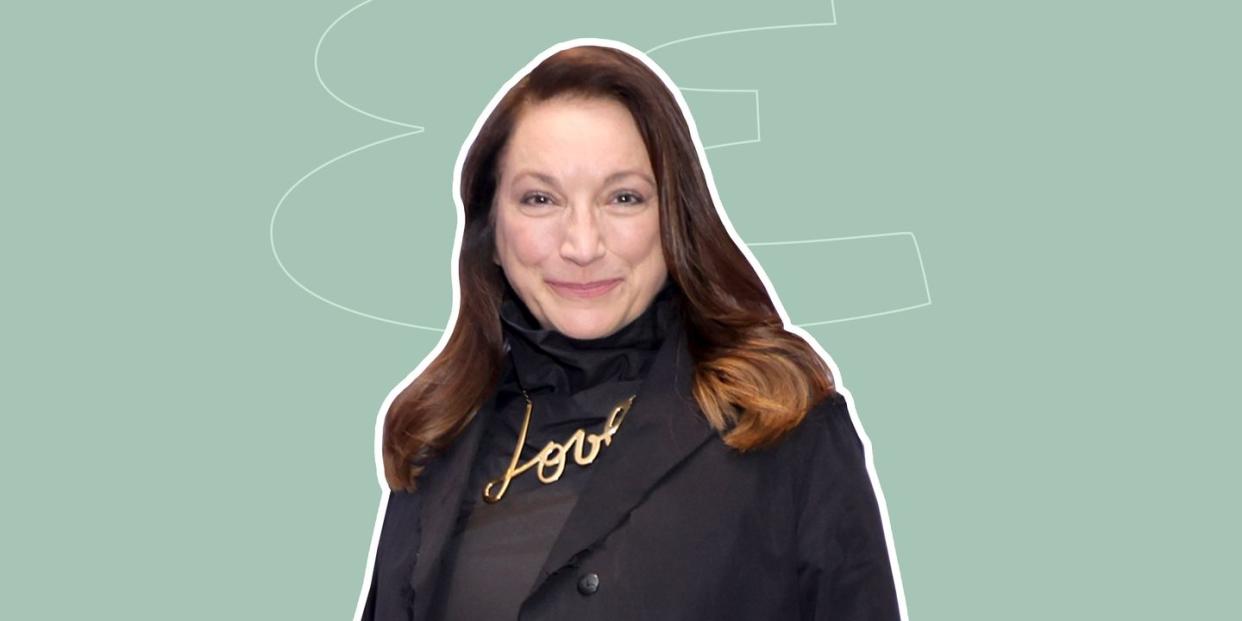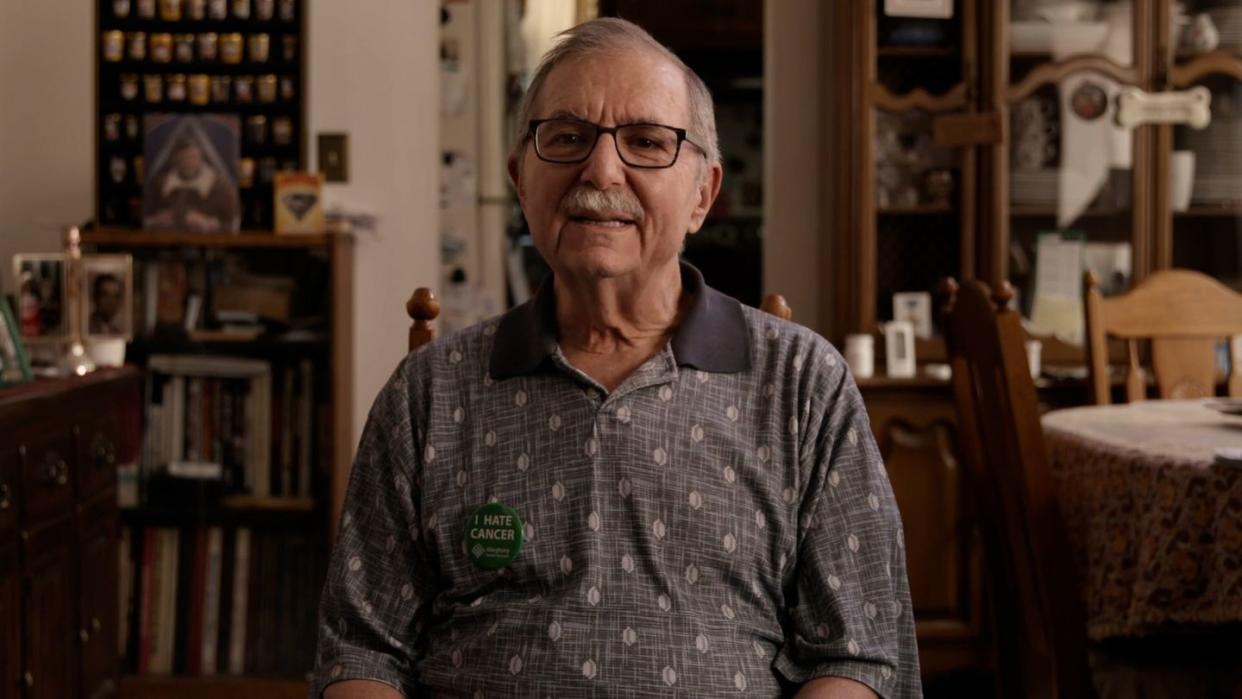'A Tree of Life: The Pittsburgh Synagogue Shooting' Puts the Victims First

Trish Adlesic was visiting her father in her hometown of Pittsburgh when she saw the news. It was a numbing, but familiar mash of phrases: Active shooter; Tree of Life synagogue; Pittsburgh. "I was in such a state of shock," Adlesic says over Zoom, remembering the 2018 anti-Semitic attack that left 11 dead. The gunman, 46-year-old Robert Bowers, was arrested and charged with 63 federal crimes. It was the deadliest terrorist attack on the Jewish community stateside.
The next day, Adlesic, a documentary filmmaker, began capturing the aftermath. She went to memorial services, and later developed relationships with the survivors. Last week, she debuted the beautiful, heartbreaking film, A Tree of Life: The Pittsburgh Synagogue Shooting, on HBO. In the documentary, Adlesic foregrounds the victims and survivors—talking to families of those who died as well as those who barely escaped the synagogue. What emerges is a rare profile of the after shocks of a mass shooting; how a community pushes forward after it's told that its sacred time is no longer sacred, and the pain and joy that comes from keeping someone's memory alive.
It's jarring to watch a documentary about a mass shooting that speaks directly to those affected. We live in a true-crime-everything, serial-killer-obsessed entertainment landscape, where Netflix subscribers just watched 3.7 billion minutes of Monster: The Jeffrey Dahmer Story in a single week. "It wasn't a conventional approach," she says, agreeing with me. "I had one company I talked to early on [that wanted to] make it about the shooter. And I said, 'Absolutely not.' That's part of the problem. We're feeding this perversion of true crime by highlighting the person that commits these acts, rather than giving voice in a way to the people that we might learn something from."
By passing the mic to the right people—and, frankly, showing a level of empathy future documentarians could learn from—Adlesic made one of this year's most critical documentaries. Here, speaking to me on the four-year anniversary of the tragedy, she shares how she pulled it off.
ESQUIRE: I have to say something unrelated to the rest of the interview. The custodian for Tree of Life, Augie—his room is the most Pittsburgh room, on the most Pittsburgh-looking street, I've ever seen.
Trish Adlesic: All the hills, right? All the hills.
Right down to the Miller Lite commemorative can. Every native in the film is a kind, gentle Pittsburgh person in the best way.
Yes, they are. The other thing is that Augie's not Jewish. He was so shy about actually calling himself a survivor. I really wanted his voice. It’s an important voice. He was very close to everyone that was killed. And just the community of Pittsburgh, to really show it on so many levels was such a profound experience—to really deal with this in a real way, without the true crime approach. I was there that day. His birthday was October 25th. And then we went back to Pittsburgh to celebrate and then it happened two days later. I was just so shaken in my core.
I was surprised by the range of responses we see from survivors. One man wants to talk to the shooter; one woman won’t say his name.
Yes. Well, in our trauma-informed approach, we asked all the same questions largely of everyone that you see in the film. So there would be an opportunity to weave together the various opinions. If I'd asked different questions, we wouldn't have had that tapestry. Their courage and willingness to tell this story and to tell it with such grace, compassion, and hope was so compelling. I had connections in the community before I started, but one relationship led to a next—it was very much an organic approach. I stayed in Pittsburgh for just about three years with my father at my childhood home. And I wanted to be there on the ground so that as people were getting comfortable, I could be ready. I didn't want to be flying back and forth from New York.
You don't hear anyone say what you always hear when something like this happens: why would God do something like this?
I think for them, being Jewish, that's something that comes with the territory. They have family members who survived the Holocaust, or suffered through the Holocaust. As Rabbi Meyer says, “We've been on this soil for over 355 years, what took so long?” This heartache of knowing that there's eventually going to be something. I mean, I had mixed feelings about that statement—but at the same time, that was his statement and that was how he felt. We're always up for grabs. The idea that Jews get blamed for just about everything, it just continues to sicken me every day.
How soon were you working on the film after the shooting?
My dear friend Elliot Joseph, his parents survived the Holocaust. His sister was killed on 9/11. We texted each other and I said, “Let's get to work. Let's document.” It was such a difficult story to go near and to want to tell. But the only thing that gave me the courage with my ability was that I could take this trauma-informed approach. That somehow I had this education that I felt would be a possibility for them to have agency, that they determine how the story gets told, in their words. I didn't want talking heads, I didn't want outside parties to tell it. And so I stayed. I was filming literally like the next day or the day after.
Going straight to the victims somehow does feel revolutionary. Especially on the heels of DAHMER, where we’re on the umpteenth iteration of a story where the killer has received the most attention.
Yes, I agree with you a hundred percent. And I did see that the family members of the victims were really harmed by that. They were very upset. And that's part of the problem, is how we glorify these people who do these evil things.
I’m curious about how you found the man who owned the gun store in what used to be a synagogue.
So I was filming Barry Werber, the gentleman who talks about his Seder dinners, and one of the survivors from the New Light congregation. I noticed a woman in the back of the room crying. I went up to her and asked, "Are you upset with the filming? We can stop." And she said, "Oh, there's this awful person who created a gun shop in a synagogue after the attack."
Wow.
I said, "Let me find out." I saw that it was purchased by this couple. They had made an Internet cafe, in a town that would never really be able to be sustainable with an Internet cafe. They tried a few other types of businesses in the venue. They fell in love with the building and put a lot of money into restoring it. And then the only thing that would sell were guns in this particular region. We drove there with the cameraman and the sound man. I didn't know what I was walking into, frankly. The conversation you see in the film is largely what ensued. I did ask him if he would do that in a Catholic church and he said he probably would.

I actually also raised funds to take the stained glass window out and the Star of David down. And I was going to bring Ellen Surloff, the former president of Dor Hadash [the Jewish congregation in Pittsburgh], to the building to have a conversation about how this was offensive and hurtful to people. And when I was pursuing this follow-up scene, his wife got involved and didn't want me to do it. She was afraid it was going to have something to do with Trump. Even though I said, "Listen, in Pittsburgh we build bridges. I think it'll be really powerful and I'll pay for it. We'll just give you a beautiful glass window without the religious symbols." He would've done it, but his wife wouldn't let us. And she said, "We're not racist." I just said, "I understand, but it's a sacred building and these are sacred symbols for us."
There’s a title card at the beginning of the film that reads, "It is a tree of life for those who grasp it." Tell me about that line.
Well, it's from the "Tree of Life" prayer, which Joe Charney sings in Hebrew in the middle of the film. But a Tree of Life is a universal spiritual symbol, and many faiths adopt it. I think it's about grabbing onto the tree and the branches, all of us collectively, so that you can make life beautiful and embrace it. I think that’s when we hold life sacred—when we hold onto the good and unite—that's really what a tree of life is for me. Eleven people were murdered while they were praying. It couldn't have been a more sacred time for this monster to come in and do this. So a Tree of Life is very sacred. Anyone can relate to the beauty and the symbolism of a tree and its many years of growth. If we love it and embrace the good from it, I really think that this is how we'll be able to make progress and learn to really accept each other.
You Might Also Like
